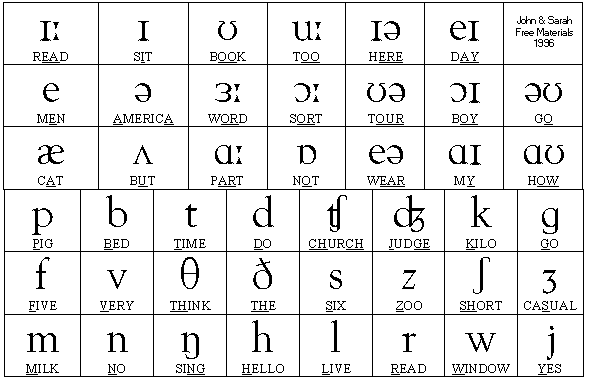The International Phonetic Alphabet

Why learn the phonetic alphabet?
You can use this packet (and most pronunciation resources) without learning the phonetic alphabet. However, the phonetic alphabet is beneficial when learning English. It offers a consistent way to know how a word is pronounced even if the spelling isn’t phonetic. It is a universal system for understanding pronunciation. For example, if we know the phonetic alphabet, we know that all of these words have the same vowel sound:
Bow thou loud crowd
Here’s how these words would be written in the phonetic alphabet:
bɑʊ ðɑʊ lɑʊd krɑʊd
Now it’s easy to tell that the words all have the same diphthong (blended vowel sound).
Here are some useful terms to know when thinking about pronunciation. If you know where to put your tongues, lips, and teeth, it helps distinguish similar sounds.
Linguistics Vocabulary:
Voiced sounds (usually sounds that vibrate in your throat): v, z, dg, dʒ, ð, ʒ
Nasal sounds (vibrate in your nasal cavities): m, n, ŋ
Labio-dental (teeth touch the bottom lip): f, v
Interdental (teeth touching between the teeth): th, ð
Bilabial (both lips move): m, w, b, p
Flap: “t” as in “butter”
Glottal: “uh-oh”
Diphthongs: These are blended vowel sounds, such as: boy, how, loud, day, beer, cure. Diphthongs are long vowel sounds.